Passive wearable sensors revolutionize identity verification by continuously monitoring your unique behavioral patterns, gait signatures, and physiological traits without requiring any active input from you. They create an invisible security layer that analyzes your typing rhythms, movement patterns, and body’s electrical resistance to establish authentication credentials that are virtually impossible to replicate. This seamless approach achieves up to 99.3% accuracy while eliminating traditional password vulnerabilities, and there’s much more to discover about this groundbreaking technology.
Continuous Authentication Eliminates Single-Point Security Vulnerabilities
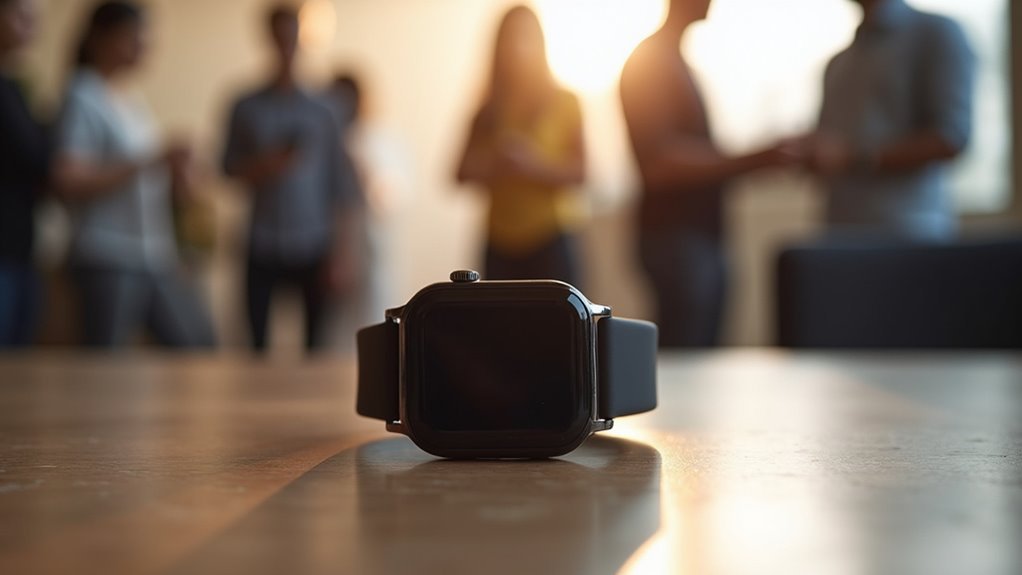
While traditional security systems rely on a single authentication point that creates a vulnerable gateway, continuous authentication fundamentally transforms how you’re verified by monitoring your behavior throughout an entire session.
You’re no longer dependent on just your initial login credentials—the system continuously watches for behavioral anomalies and responds instantly to potential threats.
Beyond password protection lies intelligent monitoring that detects threats through real-time behavioral analysis and instant response capabilities.
This multi-point verification approach dramatically reduces your exposure to unauthorized access and stolen device risks.
When you wear sensors that passively collect motion, gait, and physiological data, you’re creating layers of security that actively mitigate threats in real-time. Advanced deep learning algorithms analyze these complex behavioral patterns to identify your unique characteristics with remarkable precision.
Your session integrity remains protected throughout its duration, preventing hijacking attempts while ensuring compliance with security standards through ongoing monitoring and verification.
Behavioral Biometrics Create Unique Digital Fingerprints
Your body’s movement patterns create a distinctive behavioral signature that’s as unique as your fingerprint.
When you walk, your gait reveals subtle characteristics in stride length, foot pressure, and balance that remain consistent across different situations.
Wearable sensors capture these movement rhythms and activity patterns, transforming your natural behaviors into a reliable digital identity marker that’s nearly impossible for others to replicate. AI and machine learning algorithms continuously analyze this data to enhance verification accuracy and adapt to subtle changes in behavior over time.
Gait Pattern Recognition
How can your walking style become as distinctive as your fingerprint? Your gait pattern creates a unique biometric signature that’s revolutionizing identity verification.
Neural networks analyze 24 parameters including weight distribution, walking speed, and three-dimensional movements to achieve nearly 100% recognition accuracy with error rates as low as 0.7%.
Wearable motion sensors equipped with Inertial Measurement Units (IMUs) capture real-time gait data, enabling continuous monitoring unlike traditional biometric methods.
These compact systems analyze joint movements during walking, creating detailed profiles that are virtually impossible to replicate.
You’ll find gait recognition being tested in airports, workplaces, and homes for security purposes.
It’s non-invasive and offers more sensitive data than fingerprints or retinal scans, though standardization and privacy concerns remain challenges for widespread adoption. The system can successfully identify individuals even when they attempt to imitate another person’s walking pattern.
Activity Rhythm Analysis
Beyond physical movements, your digital behaviors create an even more intimate biometric signature through activity rhythm analysis.
This behavioral biometric tracks when and how you interact with devices, analyzing typing speed, screen time, and rest periods to form unique digital fingerprints.
Your keyboard activity and app usage reveal circadian rhythms that are distinctly yours.
Studies show strong correlations (r² 0.60–0.66) between typing patterns and rest-activity cycles, making this method more accurate than simple screen monitoring.
The system works passively through existing sensors, requiring no additional effort from you. When deviations are detected, the system can trigger additional authentication measures like fingerprint scans to verify your identity.
It continuously authenticates your identity by detecting subtle deviations in interaction timing and keystroke rhythm, making impersonation nearly impossible while seamlessly integrating with current security frameworks.
Movement Signature Capture
While timing patterns reveal your digital rhythms, the physical way you move creates an equally distinctive signature that wearable sensors can capture and analyze. Your walking gait, arm movements, and gesture patterns form unique behavioral biometrics that are nearly impossible to replicate.
These sensors continuously monitor how you naturally move throughout your day, creating a thorough movement profile. Unlike traditional biometrics requiring active participation, movement signature capture works passively in the background.
Your accelerometer and gyroscope data reveals subtle variations in stride length, walking speed, and body positioning that distinguish you from others. This approach offers real-time identity verification without interrupting your activities.
Machine learning algorithms process these movement patterns, enhancing accuracy while detecting anomalies that might indicate fraudulent access attempts or unauthorized device usage. Modern web applications implementing these systems require JavaScript enabled to process the complex sensor data and provide seamless user authentication experiences.
Physiological Traits Through Bioimpedance Sensing Technology
You’ll find that bioimpedance sensing technology operates by passing small alternating currents through your body tissues to measure their electrical resistance and reactance.
Your unique tissue composition – from muscle density to fat distribution – creates distinct impedance signatures that can’t be easily replicated by others.
This principle transforms your body’s electrical properties into measurable identity markers, allowing wearable devices to verify who you’re based on how electricity flows through your specific physiological makeup. The technology leverages frequency-dependent impedance values that correlate with your body’s specific biological responses and structural features.
Bioimpedance Measurement Principles
Bioimpedance measurement technology forms the foundation for detecting unique physiological traits that can serve identity verification purposes.
You’ll find this technology applies small electrical currents through biological tissues, measuring the opposition to current flow called impedance. The impedance values you observe depend on your tissue composition, including water content, ions, and cellular structure.
When you use measurement frequencies around 50 kHz, you’re exploiting the inversely proportional relationship between bioimpedance and total body water.
Single-frequency bioimpedance analysis estimates your physiological parameters like total body water, extracellular water, intracellular water, and fat-free mass using statistical models.
Multi-frequency bioimpedance expands these capabilities by evaluating different tissue compartments based on frequency-dependent conductivity, creating unique biometric signatures. The complex numbers representation of bioimpedance includes both resistance and reactance components, providing detailed tissue characterization.
Tissue-Specific Identity Markers
Three fundamental factors make tissue-specific bioimpedance signatures uniquely valuable for identity verification: cellular composition variability, frequency-dependent conductivity patterns, and physiological heterogeneity mapping.
You’ll find that each tissue type exhibits distinct electrical impedance characteristics rooted in unique cellular structures, membrane capacitance, and resistance properties. When you measure bioimpedance across different body locations, you’re creating spatial maps of physiological heterogeneity that’s distinctly yours.
Your tissue-specific bioimpedance profile reflects intracellular and extracellular resistance variations that can’t be replicated externally. Disease states alter these electrical signatures, providing additional authentication layers beyond surface-level biometrics. Advanced signal processing algorithms can analyze these bioimpedance measurements to achieve precise tissue identification with remarkable accuracy levels.
Through frequency sweep measurements, you’ll optimize discrimination between tissue types, establishing multi-dimensional identity markers deeply embedded in your physiological characteristics rather than superficial features.
Multimodal Sensor Fusion Enhances Authentication Accuracy
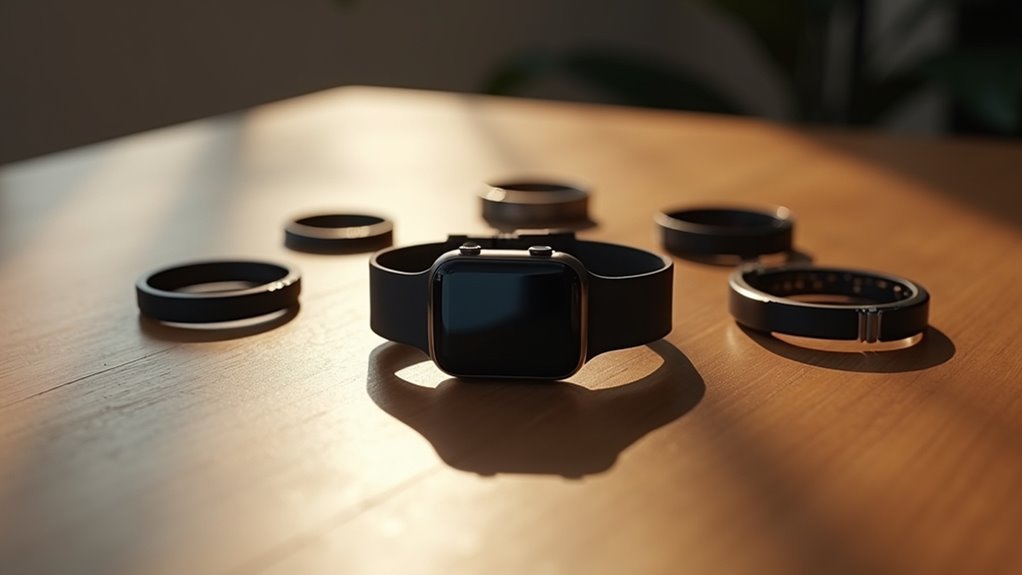
The integration of multiple biometric modalities transforms authentication accuracy from good to exceptional. You’ll achieve superior results by combining fingerprints, voice patterns, and facial recognition rather than relying on single-factor authentication.
When one modality fails or becomes compromised, others maintain security integrity through built-in redundancy.
You can implement fusion at three critical stages: feature level, score level, or decision level. Adaptive techniques adjust weights based on your specific conditions and environmental factors, while weighted score sum rules combine modality reliability ratings.
Attention mechanisms dynamically prioritize relevant data streams.
Your system becomes more versatile and robust against spoofing attempts. You’ll experience higher recognition rates and improved universality since multiple authentication options accommodate diverse user needs.
This thorough approach guarantees reliable verification even in noisy environments or challenging conditions. Modern solutions integrate seamlessly with physical identity factors to eliminate traditional authentication barriers for workers without mobile devices or company emails.
Always-On Wearable Devices Enable Ubiquitous Security
Your always-on wearable devices don’t just monitor your health—they’re constantly verifying your identity in the background, creating an invisible security shield that follows you everywhere.
This continuous authentication coverage means you’re protected whether you’re sleeping, exercising, or switching between your smartphone, laptop, and smart home devices. Unlike traditional physiological biometrics that can be duplicated or altered, your unique movement patterns provide a more secure authentication method.
You’ll experience seamless cross-device security as your wearable acts like a digital bodyguard, automatically granting access to trusted devices and blocking unauthorized access without interrupting your daily activities.
Continuous Authentication Coverage
While traditional authentication methods create security gaps between login sessions, always-on wearable devices deliver continuous identity verification that eliminates these vulnerabilities entirely.
You’ll benefit from real-time monitoring that doesn’t require any input from you, using passive sensor data like heart rate and gait patterns to maintain authentication throughout your entire device usage.
This persistent coverage protects you even during inactive periods, ensuring your identity’s constantly verified. You won’t experience the security lapses that occur with periodic authentication systems.
The technology leverages diverse sensors including PPG, ECG, and accelerometers to create robust authentication profiles that adapt to both your active and stationary states. These systems are particularly valuable for IoT devices where battery constraints and limited processing power make traditional authentication methods impractical.
This thorough approach greatly strengthens your overall security posture while maintaining seamless operation.
Seamless Cross-Device Security
Since always-on wearable devices maintain constant connectivity, they create a unified security ecosystem that extends protection across every device in your digital environment. Your wearable’s passive sensors continuously monitor behavioral patterns and physiological data without requiring manual input, making security invisible yet omnipresent.
This seamless integration allows data from multiple devices to work together, providing thorough activity views that enhance authentication accuracy. The always-on nature eliminates security gaps that typically occur when you switch between devices.
Your wearable maintains consistent surveillance of interactions across smartphones, laptops, and tablets, ensuring protection doesn’t lapse during changes. Multi-factor authentication becomes effortless as your devices collectively verify your identity using integrated data streams.
This ubiquitous approach transforms security from an interruption into a background process that adapts to your daily routine. The continuous monitoring capability provides longitudinal insights into user behavior patterns that create more robust identity verification profiles over time.
Seamless User Experience Without Active Input Requirements
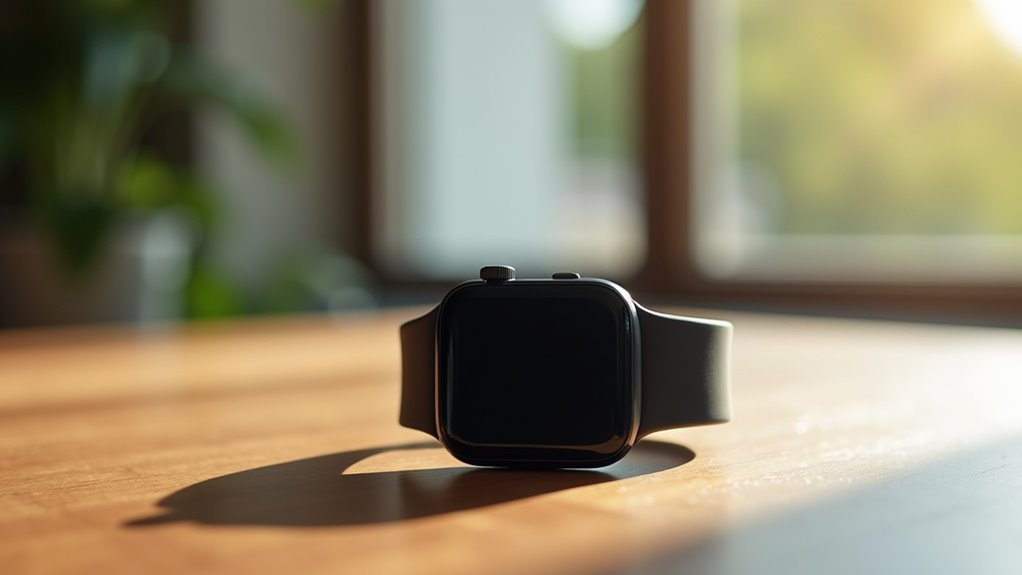
As passive wearable sensors operate continuously in the background, you’ll never need to pause your activities to prove who you are. Your identity gets verified transparently while you type, walk, or perform routine tasks without any interruption to your workflow.
You won’t face authentication prompts, password requests, or manual biometric scans that traditionally disrupt your experience. This hands-off approach greatly improves accessibility for various user groups while maintaining high completion rates of 60-95%. The frictionless processes lead to increased conversion rates during onboarding and transactions.
Your natural behavioral patterns—like keystroke rhythm or wrist movements—become your unique identifier. Since you’re unaware of ongoing authentication, your perceived ease of use increases considerably.
The result is smoother interaction compared to traditional methods, eliminating authentication friction that typically burdens users across banking, healthcare, and corporate environments.
Real-Time Anomaly Detection Prevents Unauthorized Access
Beyond providing frictionless authentication, passive wearable sensors actively monitor your biometric patterns to detect suspicious activity the moment it occurs.
These devices continuously analyze your heart rate, movement patterns, skin temperature, and behavioral biometrics to establish your unique baseline. When unauthorized users attempt access, the system immediately identifies deviations from your normal patterns.
Real-time anomaly detection offers four critical security advantages:
Real-time anomaly detection transforms wearable sensors into intelligent security systems that instantly recognize and respond to unauthorized access attempts.
- Instant threat recognition – Machine learning algorithms using LSTM networks and isolation forests detect unauthorized access within seconds
- Automatic response triggers – Systems can lock access or require secondary verification when anomalies occur
- Adaptive learning – Algorithms continuously update to your evolving patterns, reducing false positives
- Behavioral authentication – Your gait, activity patterns, and physiological responses create an unbreakable identity signature
The technology proves particularly effective for monitoring vulnerable populations where traditional authentication methods may fail due to compliance issues.
Spoofing Resistance Through Inherent Biological Characteristics
While traditional authentication methods rely on external tokens or passwords that attackers can steal or replicate, passive wearable sensors draw their security from the irreproducible nature of your biological blueprint. Your heart rate variability, gait patterns, and bioimpedance create a unique physiological signature that’s nearly impossible to fake.
| Biological Signal | Uniqueness Factor | Spoofing Difficulty |
|---|---|---|
| Heart Rate Variability | Individual cardiac rhythm | Extremely High |
| Gait Patterns | Personal walking dynamics | High |
| Bioimpedance | Body electrical properties | Very High |
These sensors continuously monitor your inherent characteristics without requiring active participation. Your skin conductivity, muscle activity patterns, and body temperature fluctuations form an authentication profile that adapts naturally to your behavior, making unauthorized access considerably more challenging for potential attackers. Unlike traditional methods that can be compromised through data breaches, these behavioral biometrics operate seamlessly in the background while providing enhanced security layers.
Machine Learning Algorithms Adapt Authentication Profiles
Once your wearable sensor begins collecting biometric data, sophisticated machine learning algorithms immediately start building and refining your unique authentication profile.
These algorithms analyze patterns in your gait, heart rate variability, and movement behaviors to create a personalized security framework that evolves with you.
Advanced biometric algorithms continuously adapt to your unique physiological patterns, creating an evolving security profile that grows more precise over time.
The adaptive authentication process includes:
- Behavioral analysis – Algorithms examine your walking patterns and physiological responses to establish baseline characteristics
- Continuous learning – Your profile updates automatically as your behavior changes over time
- Activity recognition – The system identifies specific activities like running or climbing stairs to enhance accuracy
- Contextual understanding – Algorithms consider environmental factors when validating your identity
This data-driven approach guarantees your authentication remains accurate while protecting against unauthorized access attempts. The technology demonstrates remarkable precision with diagnostic accuracy reaching over 92% in distinguishing between different movement patterns.
IoT Integration Expands Security Coverage Across Devices
Your wearable sensor doesn’t operate in isolation—it becomes part of an extensive IoT ecosystem that dramatically strengthens your security posture across all connected devices.
When you integrate smartwatches, fitness trackers, medical monitors, and smart clothing, you’re creating multiple security layers that work together. Each device contributes unique data streams—ECG signals, gait patterns, temperature readings—providing redundant identity factors that make spoofing nearly impossible.
Your system’s resilience increases because compromising one device won’t breach your entire identity verification.
Physically Unclonable Functions exploit manufacturing variations in each device’s microcontroller, creating tamper-resistant hardware fingerprints.
You’ll benefit from continuous authentication that adapts as you move between devices, while enterprises gain unified risk scoring across all endpoints for robust access control. The real-time data processing capabilities enable immediate threat detection and response across your entire connected ecosystem.
Daily Activity Patterns as Authentication Credentials
As you move through your daily routine, your wearable sensors continuously capture behavioral biometrics that create a unique authentication signature from activities you’re already performing. Your walking gait, arm movements, and typing rhythm become inherent biometric identifiers that differentiate you from others through habitual motion patterns.
Your everyday movements naturally become your password, turning routine activities into seamless security through invisible behavioral patterns.
Machine learning algorithms analyze these patterns using data from accelerometers, gyroscopes, and physiological sensors, achieving remarkable verification accuracy:
- Multi-sensor fusion combines ECG, PPG, and motion data to achieve error rates as low as 1.9-2.6%
- Continuous adaptation allows models to adjust to your behavior changes over time
- Forgery resistance makes your patterns harder to spoof than static biometrics like fingerprints
- Real-time processing enables authentication using just one minute of sensor data with 2% error rates
Smart Jewelry and E-Textiles Democratize Biometric Security
While traditional biometric security has remained confined to specialized devices and corporate environments, smart jewelry and e-textiles are transforming authentication into an invisible, everyday experience.
You’re no longer bound by bulky tokens or vulnerable passwords when smart rings embed FIDO2-compliant fingerprint sensors with EAL5+ certified secure elements. Your clothing becomes your security system through e-textiles that incorporate heart rate and motion sensors, providing continuous authentication without active input.
You’ll experience phishing-resistant protection as these wearables eliminate credential theft risks through device proximity validation and blockchain-based identity platforms. Since over 90% of successful cyberattacks originate from phishing emails, this level of protection becomes critical for preventing the single user vulnerability that can expose entire organizations to breaches.
Your authentication becomes seamless—whether through gesture-controlled smart rings or multipoint physiological signals processed locally on garments. This democratization makes biometric security accessible globally through cost-effective, scalable production while maintaining privacy through local data processing.
Frequently Asked Questions
What Happens if Someone Temporarily Borrows or Steals My Wearable Device?
If someone borrows or steals your wearable device, they can’t easily mimic your unique behavioral patterns. However, you’re still vulnerable during pairing processes and should enable multi-factor authentication for protection.
How Much Battery Life Do Passive Sensors Consume During Continuous Authentication?
Passive sensors consume minimal battery life during continuous authentication. You’ll typically see less than 5% battery drain over 12 hours, since they leverage existing data streams without requiring additional power-intensive sampling.
Can Medical Conditions or Aging Affect the Accuracy of Biometric Authentication?
Medical conditions and aging can definitely affect your biometric authentication accuracy. You’ll experience changes in fingerprints, facial features, voice patterns, and iris scans that may require system updates or alternative authentication methods.
What Privacy Protections Exist for the Continuous Collection of Biometric Data?
You’re protected by state laws like Illinois’ BIPA requiring informed consent, written policies, and security measures. However, there’s no federal oversight, so protections vary greatly depending on your location and applicable regulations.
How Much Do Passive Wearable Authentication Systems Typically Cost to Implement?
You’ll face variable implementation costs depending on your system’s complexity and user base size. Hardware, software development, installation, and ongoing maintenance expenses can range considerably based on your organization’s specific authentication requirements and technology choices.
In Summary
You’re witnessing a fundamental shift in how identity verification works. Passive wearable sensors don’t just offer convenience—they’re creating an entirely new security paradigm. You’ll no longer worry about forgotten passwords or stolen cards because your unique behavioral patterns and physiological traits become your credentials. As these devices seamlessly integrate into your daily life through smart jewelry and e-textiles, you’re getting continuous, invisible protection that adapts and learns from your habits.

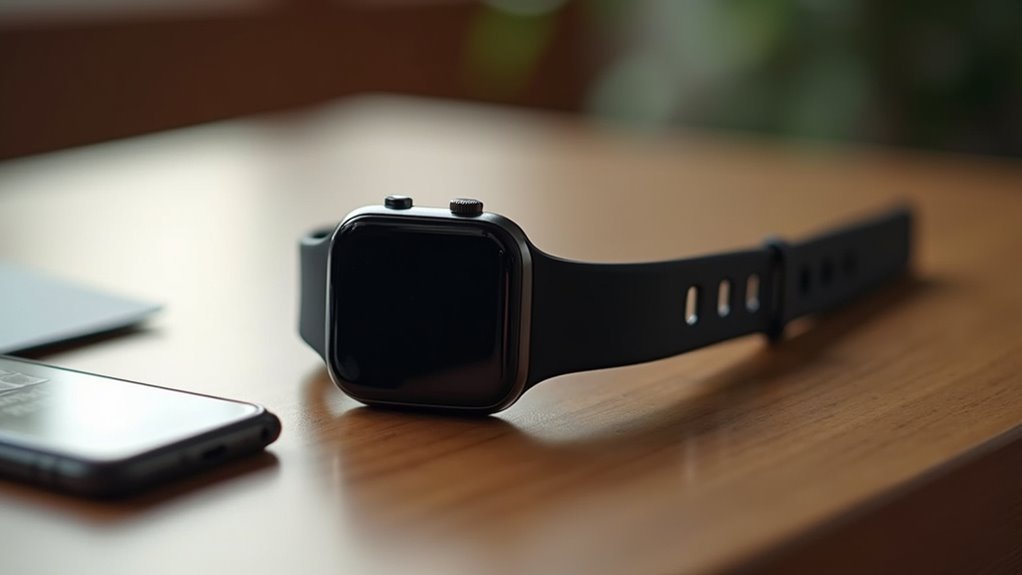
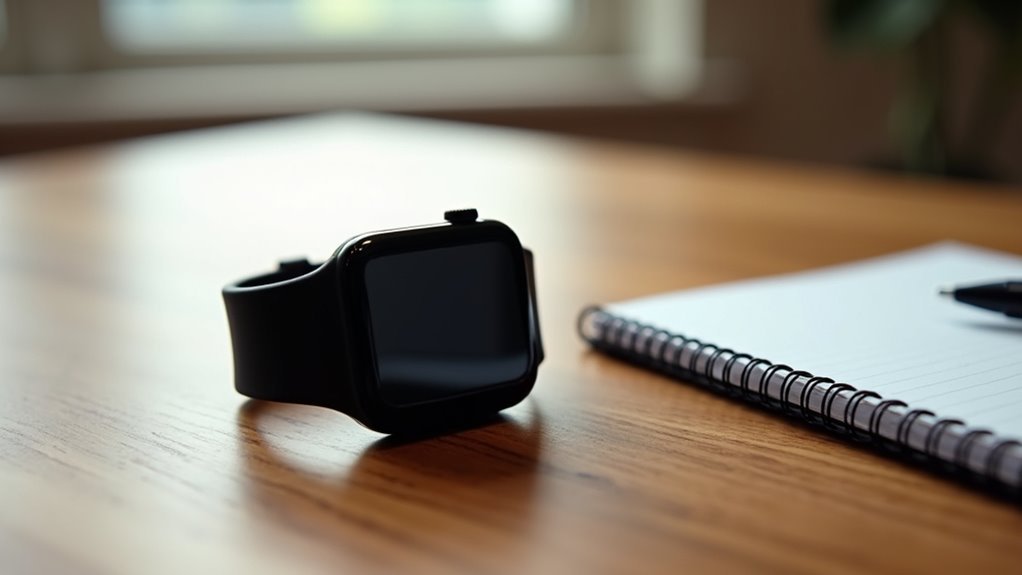
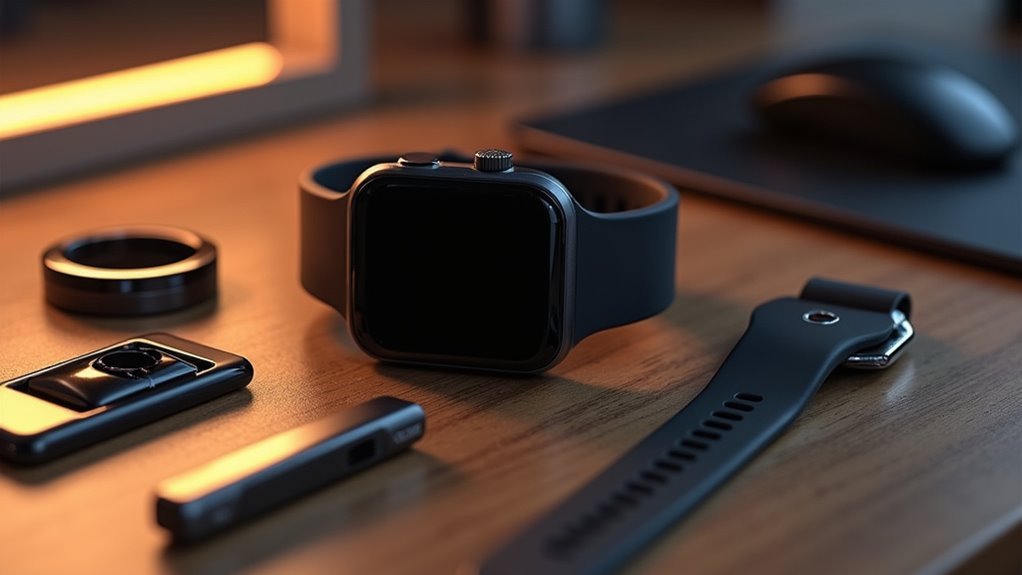
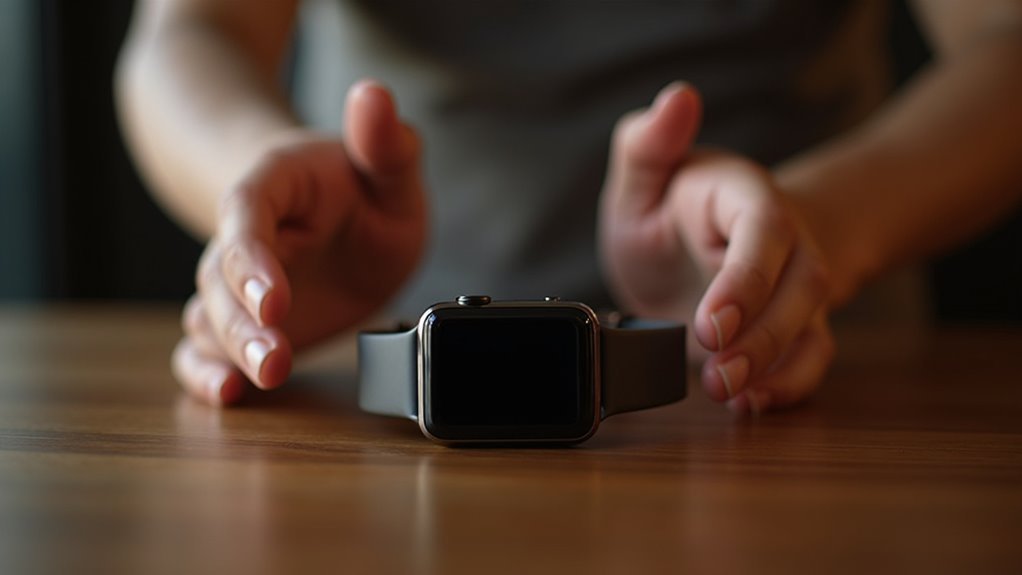
Leave a Reply